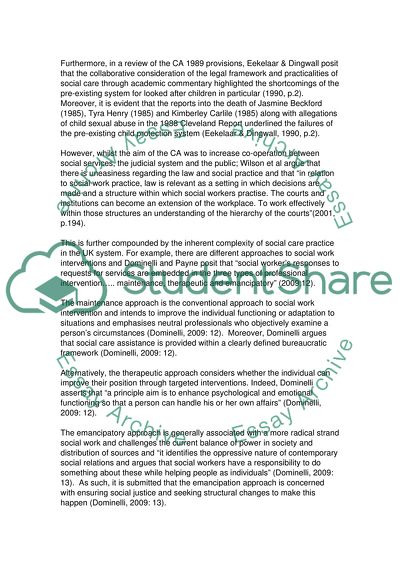Cite this document
(Evolution of Childrens Social Care within the UK Research Paper, n.d.)
Evolution of Childrens Social Care within the UK Research Paper. Retrieved from https://studentshare.org/social-science/1728442-a-identify-key-milestones-in-the-evolution-of-childrens-social-care-within-the-uk-over-recent-decades-and-b-describe-how-current-legislation-policy-theory-and-research-influence-current-practice-in-child-protection-and-also-youth-justice
Evolution of Childrens Social Care within the UK Research Paper. Retrieved from https://studentshare.org/social-science/1728442-a-identify-key-milestones-in-the-evolution-of-childrens-social-care-within-the-uk-over-recent-decades-and-b-describe-how-current-legislation-policy-theory-and-research-influence-current-practice-in-child-protection-and-also-youth-justice
(Evolution of Childrens Social Care Within the UK Research Paper)
Evolution of Childrens Social Care Within the UK Research Paper. https://studentshare.org/social-science/1728442-a-identify-key-milestones-in-the-evolution-of-childrens-social-care-within-the-uk-over-recent-decades-and-b-describe-how-current-legislation-policy-theory-and-research-influence-current-practice-in-child-protection-and-also-youth-justice.
Evolution of Childrens Social Care Within the UK Research Paper. https://studentshare.org/social-science/1728442-a-identify-key-milestones-in-the-evolution-of-childrens-social-care-within-the-uk-over-recent-decades-and-b-describe-how-current-legislation-policy-theory-and-research-influence-current-practice-in-child-protection-and-also-youth-justice.
“Evolution of Childrens Social Care Within the UK Research Paper”, n.d. https://studentshare.org/social-science/1728442-a-identify-key-milestones-in-the-evolution-of-childrens-social-care-within-the-uk-over-recent-decades-and-b-describe-how-current-legislation-policy-theory-and-research-influence-current-practice-in-child-protection-and-also-youth-justice.


